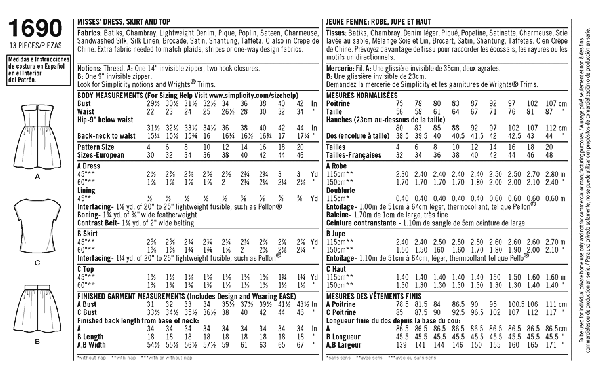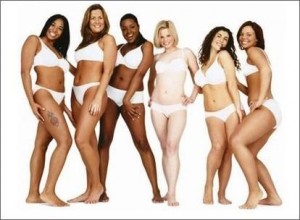Real Body Series Part 1: Real Women = Real Body Image
Size Matters
Why does size matter? Throughout the last few decades advertisers and the media have inundated us with images of women who are impossibly thin and way above average height. From television, movies, magazines, and every other form of media, these images are inescapable. For women of different all types, these images are almost bulling us into placing a value, either positive or negative, on what size we wear.
Before WWII, there were no standardized sizes, because clothes were made at home where they were made to fit the individual body of the person for whom it was being made. The very wealthy looked to Europe for fashion and styles and had their clothing tailored to fit by professionals.
The Birth of Standard Sizes
“Standardized” sizes came with the marketing of off-the-rack and mail order merchandise. And yes, as early as the Revolutionary War, men’s sizes were standardized. Based on the size of men’s chests, uniforms were mass produced and stocked on shelves waiting the next war. In the late 1930’s, when women’s standardized sizes appeared, women’s sizes were based on the same standard as men’s were, their bust measurements. Dolly Parton’s 4’11” would wear the same size as 6’8” Amazon Eve, the world’s tallest model. When the “returns” outnumbered the sales, Sears and Montgomery Ward, the leading mid-century mail order and retailers, realized the need for more realistic standards for women’s clothing if they intended to sell to women across the country.
While sizing guidelines were developed about this time, retailers and clothing manufactures soon found it was advantageous to stray from these standards. Many believed that a size 12 woman would buy more of their brand if that size 12 dress and an 8 on it instead. How many times have you heard “This brand runs small” or “This brand runs big”. It’s because that brand is playing psychological games with their consumers. Each brand and retailer will slap any number on any item of clothing if they think it will help their bottom line.
Traditionally, the more expensive the clothing, the smaller the size on the label, i.e. a Coco Chanel original size 8 suit was in reality a size 10 or even a 12 if purchased at J.C. Penney’s in the 1960’s.
A Real Revolution
So here we are in the 21st Century and finally things are changing to reflect reality. How do you feel after pulling a pair of jeans in your usual size (12/14 US women’s average pants size) off the rack and then disappear into the closet sized dressing room to try them on? A few minutes later, sweat pouring from your brow, hopping on one foot, then the other as you yank, pull, and tug them over your knees and onto but not past your thighs before falling through the curtain into the aisle. Beached like a whale, rolling on your back like a turtle, your happy to shop mood dissolves into tears of shame and wonder “why my size is no longer my size?”, or “Did the pants shrink on the way to the dressing room?”.
Lousy, right?
Well, hope is on its way with the Real Revolution for Real Women in the Media. And we have Barbie to thank for it (See my article Death of a Doll, Barbie R.I.P. in the April 2016 issue of The Science Behind the Law of Attraction Magazine)—how ironic! Since Mattel has updated their unrealistic representation of a woman’s body to reflect real women, others are following suit. The cover of this year’s Sports Illustrated Swimsuit Edition, their most popular issue every year, featured plus size model, Ashley Graham, with two other real women looking lovely in bathing suits. Ebony Magazine followed suit with real black women gracing the latest cover of their magazine. Kudos to Redbook for banning the term “plus-size” from their pages, and to Dove Industries for featuring real women in their full page advertising a decade ago.
We are witnessing a marriage between advertising/media and “models” based on real women. The tall, thin, unhappy looking young women considered the ideal image for couturier fashion in Europe are disappearing from print and media advertising aimed at American women. Even the definition of the word model according to the Encarta English Dictionary, “A copy of an object, especially one made on a smaller scale than the original” tells us that “less is usually more” in real life.
It’s Time to Step Up
Isn’t it time to take responsibility for our own shapes and sizes, with physical and mental health being the only relevant standard for each of us? As soon as you accept accountability for your appearance, you are back in control of it.
And by “you”, I refer to you and your body. When you allow anything or anyone outside of you and your body to create shame, you are relinquishing control over the one single thing you were born with control over: yourself.
With the media and advertising standards becoming more realistic, this revolutionary idea of representing women as they really are only becomes real when women accept their appearance with confidence and pride.
Share Tags: Body Image








Leave a comment: